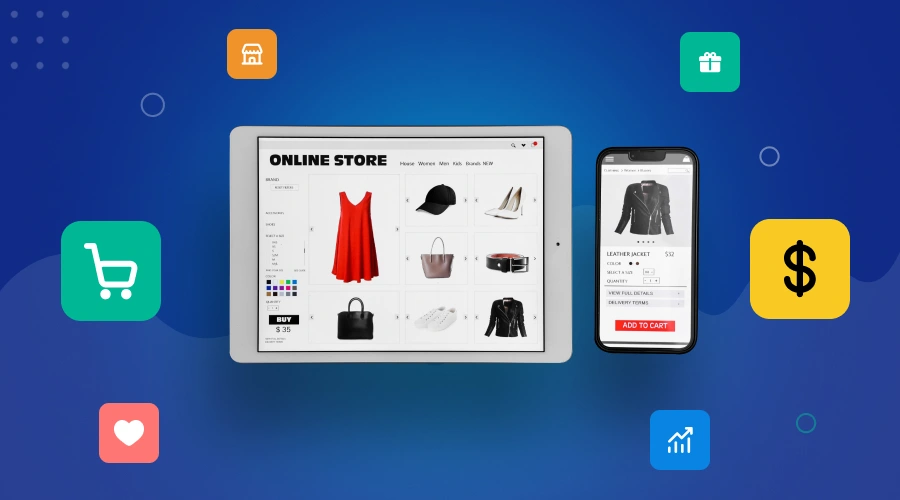Every detail is important in the realm of web design. Within a few seconds, users judge your website, and this first interaction can be decisive in their choice to continue using it or not. Microinteractions are the small but vital moments of interaction that shape a good user experience (UX).
The blog is about microinteractions, explaining how they boost usability, offer important feedback, and, in the end, create a strong impact on your visitors.
What Are Microinteractions?
Microinteractions are tiny, transitional animations or feedback systems that happen in reaction to user activities. They could be as simple as a button changing its color when you hover over it with your mouse and can grow complex, such as an unobtrusive animation guiding users through the process of filling out forms.
The crucial point is that microinteractions are deliberate and meaningful. They have a specific purpose beyond just being visually pleasing, with the goal of:
- Provide feedback: Confirming user actions and system status.
- Guide users: Leading them through the interface intuitively.
- Enhance usability: Simplifying complex interactions and reducing cognitive load.
- Increase engagement: Making the website feel more dynamic and responsive.
- Build trust: Reinforcing a sense of reliability and polish.
The Impact of Microinteractions on UX
Microinteractions have an important impact on the user’s experience and perception of your website. Let us consider their contributions to UX:
- Improved Usability can bring attention to interactive parts, such as subtle animations on buttons or form fields. This aids users in comprehending where they can act, lessening confusion.
- Complexity Made Simple
Breaking down complex tasks into smaller, guided steps with microinteractions makes it easier to navigate and complete forms. - Fewer Mistakes
Animations and feedback may prevent users from committing errors by indicating necessary fields or issuing warnings before any non-reversible action.
Enhanced Feedback
- Confirmation of Actions
Users may also appreciate simple visual cues, such as a button changing color or a checkmark animation, to confirm that their click has been recognized. - System Status Updates
Microinteractions can convey loading states, progress bars, or error messages subtly. This keeps users knowledgeable of the system’s current condition and helps prevent irritation.
Increased User Engagement
- Pleasant little details
Good microinteractions can ensure a touch of personality and delight in user interactions. - Responsiveness
Microinteractions give a feeling of responsiveness, making the website appear dynamic and interesting. - Encouragement for Exploration
Subtle animations can direct user attention to particular elements, motivating them to explore different features.
Stronger Brand Identity
- A unified design language
Microinteractions can represent the character of your brand, strengthening its recognition as people move through the experience. - Emotional Bond
A good microinteraction can create an emotional connection, making people trust and feel connected to your brand.
Examples of Effective Microinteractions in Web Design
Let’s explore some real-world examples of microinteractions in action:
Hover effects: These are seen when a user hovers over a button, making it slightly change color, or size or adding a gentle shadow to show interaction is possible.
Progress bars: These are animated progress bars that show loading times or completion of tasks. They help users stay informed and interested.
Accordion menus: When you click on a header of an accordion menu, it may trigger a gentle animation that expands or collapses the content. This action establishes an evident structure and visual confirmation, forming a distinct hierarchy.
Error messages: Instead of showing a normal text error message, we can have a microinteraction that gently shakes the input field.
Success notifications: When you finish filling out a form or taking an action, there might be a quick animation or sound effect that pops up to support and encourage positive user behavior.
Designing Effective Microinteractions
While microinteractions seem simple, effective implementation requires careful planning and design considerations:
Goal: Determine the purpose of every small interaction, whether it is to give feedback, assist users, or bring joy.
Consistency: Make sure that microinteractions follow a consistent design language on the whole website to keep the user experience unified.
Subtle: Overly complex or flashy animations might divert attention. Make microinteractions delicate, understandable, and meaningful.
Performance: Microinteractions should be lightweight and load quickly to avoid impacting website performance.
Conclusion
Microinteractions, often unnoticed, play a big role in web design. They can enhance usability, give clear feedback, and create an engaging experience for users. When you use well-designed microinteractions, it makes the overall feel of using your site functional and enjoyable at the same time.







